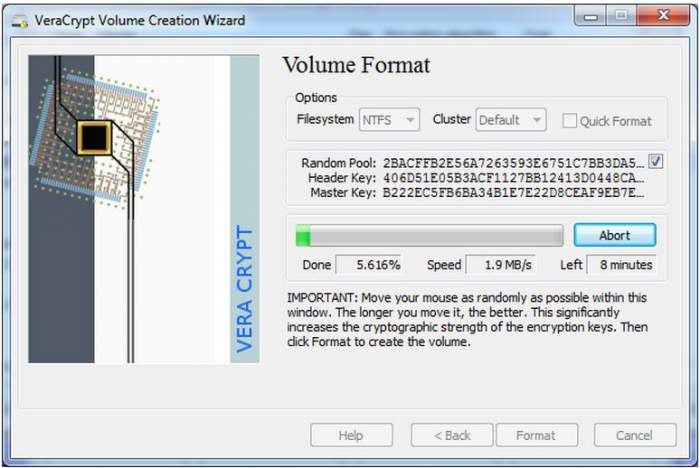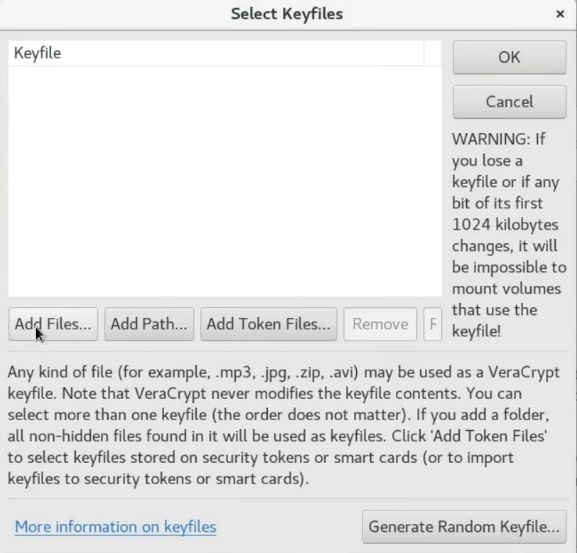
Generate An Encrypted Key File For Veracrypt Free
It is also possible to generate multiple files and specify their size (either a fixed value for all of them or let VeraCrypt choose file sizes randomly). In all cases, the file size must be comprised between 64 bytes and 1048576 bytes (which is equal to 1MB, the maximum number of a key file bytes processed by VeraCrypt). Aug 02, 2017 Finally, finish up and let VeraCrypt create your encrypted volume. Using Your USB. Back at the main screen select a slot where you want to mount your USB. On Windows make sure to pick a drive letter where nothing else is mounted. Click on the “Select Device” button. Select your encrypted USB drive and click “Open.”. Aug 02, 2017 How to Create an Encrypted USB with VeraCrypt. By Nick Congleton – Posted on Aug 2, 2017 Sep 10. The final couple of windows are going to get you to generate the encryption, choose a format for your drive, and format it.

Key File Download
Note that the volume header (which is encrypted with a header key derived from a password/keyfile) contains the master key (not to be confused with the password) with which the volume is encrypted. If an adversary is allowed to make a copy of your volume before you change the volume password and/or keyfile(s), he may be able to use his copy or fragment (the old header) of the VeraCrypt volume to mount your volume using a compromised password and/or compromised keyfiles that were necessary to mount the volume before you changed the volume password and/or keyfile(s).
If you are not sure whether an adversary knows your password (or has your keyfiles) and whether he has a copy of your volume when you need to change its password and/or keyfiles, it is strongly recommended that you create a new VeraCrypt volume and move files from the old volume to the new volume (the new volume will have a different master key).
Also note that if an adversary knows your password (or has your keyfiles) and has access to your volume, he may be able to retrieve and keep its master key. If he does, he may be able to decrypt your volume even after you change its password and/or keyfile(s) (because the master key does not change when you change the volume password and/or keyfiles). In such a case, create a new VeraCrypt volume and move all files from the old volume to this new one.
The following sections of this chapter contain additional information pertaining to possible security issues connected with changing passwords and/or keyfiles: